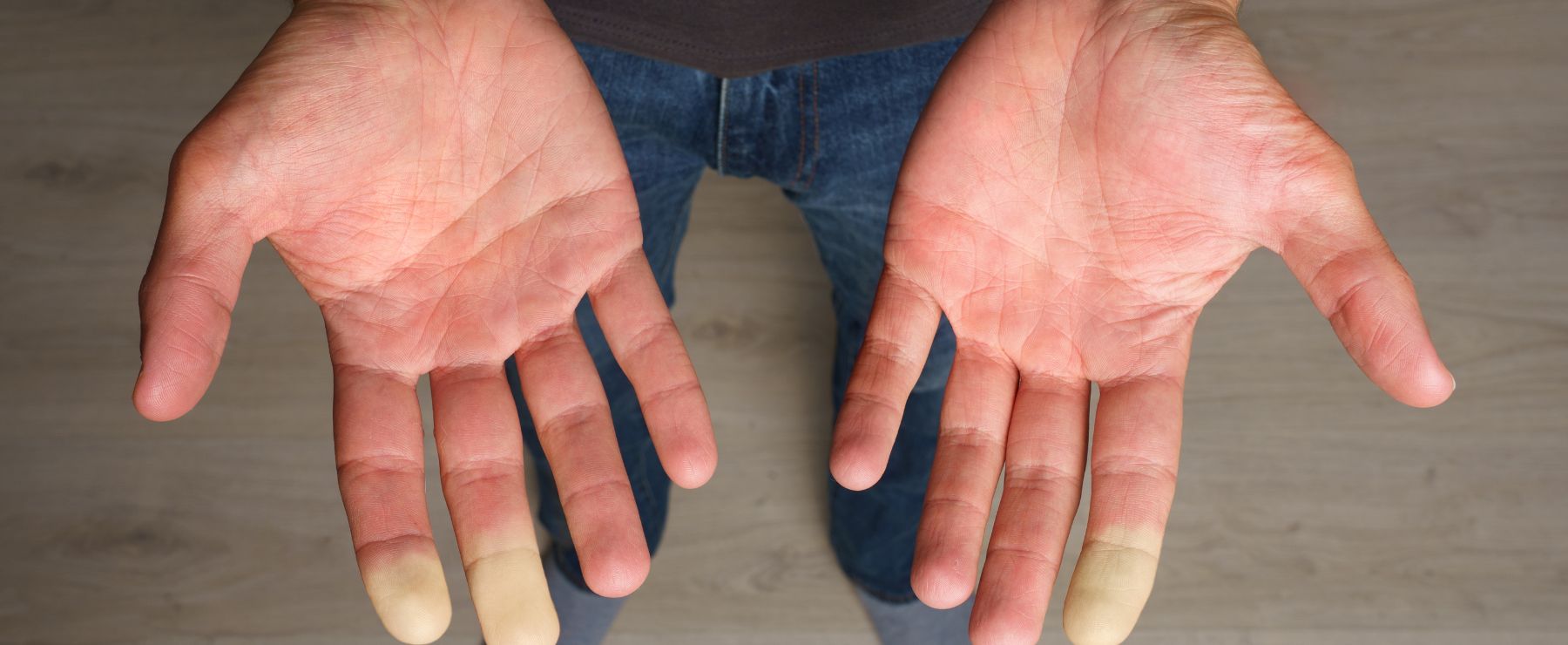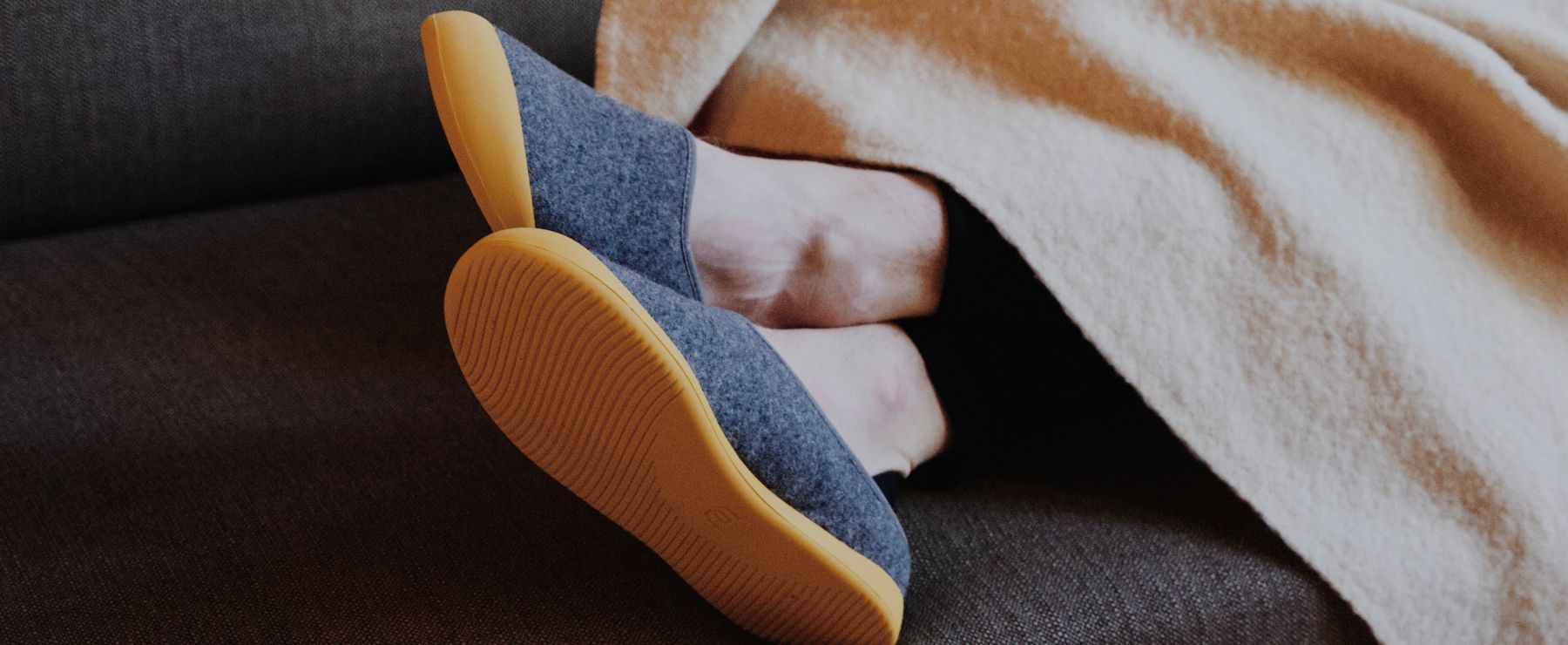Why are my feet always so cold and how do I keep them warm?

Cold feet don’t just strike before the wedding—if you live in a cold climate it’s a familiar winter feeling. But for some of us, cold feet can come on at any time and they stick around too.
The reasons for constant cold feet can range from environmental factors, through to some more serious medical conditions.
As our mission is to help to eradicate cold feet from the world, we’ve looked into the different reasons for cold feet, and the best practises for warming those toes up.
Why are my feet cold?
While it’s most often down to being in a cold environment, if you’re finding your feet are always cold, it could be a sign of something more. Here are the top four reasons for cold feet:
1. Poor circulation

Apart from it being cold outside, poor circulation is one of the most common causes of cold feet.
Poor circulation is when your blood vessels are constricted. This means there isn’t enough blood getting to the feet to keep them warm.
Cold feet and hands is a common sign of poor circulation, along with numbness or swelling in you extremities, muscle cramping, and fatigue.
Sitting at a desk all day—then sitting on the sofa all evening—can contribute to poor circulation. As can smoking, a poor diet and high cholesterol. Sometimes it’s something you can’t control, like getting older, but other times simple lifestyle changes are enough to boost your blood flow.
2. Raynaud’s syndrome

Raynaud’s syndrome is not as scary as it sounds and it’s actually pretty common; up to 20% of people have it.
It causes blood vessels to temporarily spasm which limits blood flow to your hands and feet making them feel colder. There can be some discoloration and then numbness and tingling as the extremities warm back up again.
Though Raynaud’s syndrome can sometimes develop by itself, it can also be a sign of another medical condition like lupus or rheumatoid arthritis. It’s worth getting things checked out with a doctor just in case.
Most of the time, Raynaud’s syndrome can be managed without much intervention. Patients are told to avoid the cold as much as possible, especially prolonged exposure. Doctors will also tell you to layer up with socks and slippers inside and high quality footwear outside.
3. Stress and anxiety

Cold feet is yet another symptom caused by stress and anxiety. When we’re stressed, our bodies go into flight or fight mode and blood is preserved for the vital organs and the core. This leaves the less important parts, like the hands and feet, without their fair share.
Just like with poor circulation, this means there isn’t enough blood getting to the feet to keep them warm.
If you’re going through a busy period at work, experiencing some family problems or suffering from anxiety, you may find your feet are feeling a bit colder than usual. Luckily, this is another condition that can usually be managed with little intervention and some small lifestyle changes you can easily make at home.
4. Anaemia

Anaemia is a condition caused when you have a below normal level of red blood cells in your blood. This means oxygen can’t be carried efficiently around the body. Symptoms can include fatigue and heart palpitations, as well as cold feet.
There are a few different types of anaemia, so it’s important to see a doctor to get an accurate diagnosis as treatment will vary. Most often, anaemia is caused by a deficiency in either iron, B12 or folate and can be treated through prescribed supplements. Minor cases can even be improved through diet changes.
Occasionally, anaemia is caused by something more serious like blood loss or bone marrow diseases, so it’s always worth a check-up at the doctors.
How can I keep my feet warm?
Now you know the reasons for cold feet, it’s time to learn how to keep your feet warm. Whether it’s just cold weather or something biological, there are a few things you can do to warm up already cold feet and to keep the chills at bay in the first place.
1. Put some slippers on

The obvious answer for warming your feet is warm footwear like slippers — but there’s slightly more to this than you may think.
Materials do matter. Go for slippers with a wool lining which will wick moisture away from your feet and regulate their temperature (the only thing worse than cold feet are sweaty feet).
If your slippers are too tight they could restrict the blood flow which will make your feet feel colder. If your slippers are tight, avoid wearing socks with them.
As an additional tip - supportive slippers (ones with a heel and arch support) will reduce strain on your feet and legs.
Grab a thick pair of socks to wear in bed, too. Just be sure that your socks aren’t too tight as this could restrict blood circulation which, as we’ve learnt, leads to cold feet again.
If you live in a cold region, invest in high-quality footwear for outdoors. This can help to keep your feet warm in cold weather.
And don’t forget about the rest of your body as well. If your core is cold, your feet will probably be cold too. Layer up with jumpers and, if you’re going outside, a coat, hat and gloves. Every little helps when it comes to keeping warm.
2. Heat your feet up

If socks aren’t enough, you can turn to something even warmer for instant relief from cold feet. Run a hot bath and soak cold feet for 10 to 15 minutes. Heat up a hot water bottle to rest your feet on or, especially if you struggle with cold feet at night, invest in an electric blanket to warm up your bed.
Applying some heat directly to your feet opens up the blood vessels and allows more blood to flow into the extremities. This warms them up and then keeps them warm for longer.
These tactics are especially useful if you’ve just come in out of the cold or if you’re getting ready for bed.
If you’re already in bed and don’t want to get out to grab a hot water bottle, try a quick foot massage to get the blood moving and stimulate circulation.
3. Exercise daily and move often

We’ve learnt that poor circulation can be a leading cause of cold feet and one of the easiest ways to boost your blood flow is to move. Getting a sweat on gets your heart pumping harder and pushes blood around the body faster, meaning those extremities get more blood and more warmth.
Avoid long periods of inactivity like sitting at your desk all day or long stints in front of the TV. Instead, try to get up every 30 minutes or so to stand, stretch and walk around. Even better? Do a few jumping jacks to get the blood moving again. At the very least, wiggle your toes often and do some ankle circles, a much more subtle option when you’re in a busy office.
If you lead a sedentary lifestyle in general, try to incorporate more movement into your routine. A pre-work gym session, lunch break jog or evening yoga class aren’t only great for your health, they’re great for your circulation and cold feet, too.
4. Lead a healthy lifestyle

A healthy lifestyle is one of the easiest ways we can avoid all kinds of conditions, including chronic cold feet. Try making a few adjustments to your daily life and see what works for you. While it won’t bring relief immediately, upgrading your health could solve the root of the problem and stop your feet getting cold in the first place in the future.
First, nutrition. When it comes to food and keeping feet warm, opt for iron-rich foods to reduce any iron deficiencies you may have. These include legumes such as lentils and beans, nuts, seeds, seafood and dark leafy vegetables such as spinach and kale. You should also manage cholesterol with a diet made up of whole foods and plenty of fruits and vegetables.
Drink plenty of water to stay hydrated. Nothing in your body can function at its best when you’re dehydrated, including your blood flow.
Cut down on alcohol and caffeine, which can thin the blood and restrict the blood vessels. Smoking can also damage your blood vessels and reduce circulation
When it comes to exercise, aim for five workouts a week with a mix of cardio and strength training. Avoid long periods of inactivity throughout the day and aim to get up and move around as often as possible. And don’t forget to get those 10,000 steps in too.
Food and exercise aren’t the only things that contribute to health. Your stress levels play a huge part as well. Stress and anxiety can be a reason for cold feet, so it’s important to manage these. Take time to recharge and disconnect after work, start a relaxing hobby just for you, spend time in nature and with family and friends. And don’t forget to reach out to others and ask for help when you need it.
And there you have it. If you’re suffering with chronically cold feet, we’ve rounded up four likely culprits beyond it being cold outside.
More importantly, we’ve described four ways to warm feet up at home and how to keep them from getting cold in the first place.
Here are our top picks for warming your feet this winter:
 |
 |
View our whole slipper range here.


